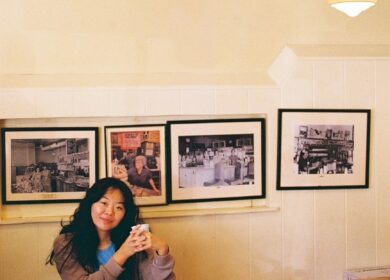
By Adele Soh, Senior Account Executive, The Hoffman Agency Singapore
If there are two brands that my colleagues constantly associate me with, it has to be Disney and LEGO. Growing up, these two brands were etched in my heart, with many memories linked to their characters (Disney) and merchandise (LEGO). After being in the PR industry for more than four years now, the marketing and branding efforts of both companies continue to amaze me — as I begin to examine how they succeeded in finding a place in my heart even as an adult.
First, both Disney and LEGO knew from the beginning what their core company identity was. LEGO, the household name that it is now, had its humble beginnings as a wooden toy manufacturer, while Disney started off as a cartoon studio with the sole aim of telling stories to entertain the entire family. With this focus, every idea and plan that was birthed from the respective companies was very much grounded in their roots.
The companies and my childhood

As a child, LEGO represented a bucket of toy bricks that had been passed down from a cousin nearly 15 years my senior. These bricks allowed me to build the house that only existed in my imagination, and now, two decades on, these same bricks bridge the gap between my nieces and me — with me regaling them with the story of how their dad would play with this same bucket of LEGO bricks.
To me, Disney was all about the many characters on television — thanks to video tapes and residing in storybooks where I would begin to dream about singing like Ariel, finding my Prince Charming like Cinderella or saving my nation like Mulan. Also, something about the iconic mouse, his girlfriend and gang of animal-like friends always brought a smile to my face (and probably dented a hole in my parents’ wallets).
Both companies excelled in their core competencies, spurring children to dream big and allow their imagination to dictate who they wanted to be.
Being consistent in the voice that’s projected

Another step in the right direction for both these companies was the consistency in the “voice” they had, regardless of the channel, medium or audience. Taking a closer look at Disney Parks around the world, it amazes me to see how each Park is successful at marrying both the culture of the country it resides in with the core identity of the Disney brand.
With the tagline of, “The Happiest Place on Earth,” each Park succeeds in transporting guests into a world where they can live out their childhood dreams of being in the stories that accompanied them as they grew up. Disney uses the minutest of details: ground staff are called “Cast Members” to build on the message that as a guest, you are a part of this theatrical production as your fairy tales come to life in Disneyland!
Over the years, LEGO may have had its fair share of ups and downs, but has now been able to collaborate with different franchises to create something that is still uniquely LEGO. With the wildly successful introduction of Minifigures in 1978, LEGO gave their adult fans (like me) a chance to reimagine storylines like Marvel’s Avengers, Star Wars and The Simpsons together with the massive playsets. LEGO bricks were first conceived to be a “creative system of play,” and that resonated with fans young and old who have taken to using the bricks to create new memories.
Recently in line with Singapore’s 50th celebration, LEGO Singapore published a video where its Master Model Builders created their idea of what Singapore would look like in 50 years. The scene was bleak and mechanical with more high-rise buildings dotting the already crowded skyline.
The twist came when children were invited to add on to what they thought Singapore should look like. Some began to dismantle the skyscrapers, one girl decided to build her house next to her father’s office so that he could come home immediately after work to play with her, while another boy decided that pets needed to be able to roam free in the parks around. While the video may have been part of the company’s efforts to commemorate Singapore’s Jubilee celebration, it was still true to LEGO’s brand ideals as a “system for creative play” encouraging children to run free with their imagination.
Looking forward
Of course for a company to last several decades and to continue to grow into a global corporation and household name, it needs to be able to adapt, grow with the times and yet not neglect its core brand values.
For Disney, its latest innovation and step into the future came with a billion dollar investment in MagicBands — wristbands for guests that feature a long-range radio that is able to transmit more than 40 feet in every direction. Disney introduced these MagicBands to elevate the magical experience with contactless payment options and doing away with paper tickets and the traditional “FastPasses,” express tickets issued for rides. In its initial stages in 2008, the project was shrouded in secrecy and was only known to a handful of Disney employees; ultimately the company recognised the need to move with the times and yet still stay true to Walt Disney’s vision for the Parks, where guests were supposed to find themselves in the land of yesterday, tomorrow and fantasy.
Even though LEGO has been successful in its growth as a toy company encouraging children to build, it realised the importance of venturing into the online games space — given the significance of iPads and mobile devices as an essential part of a childhood — and finding a balance in the online and offline world.
This came in the form of LEGO mobile apps where individuals would be able to bring their LEGO Minifigures to life, albeit virtually, and play along with their respective storylines. One of their bigger projects to date would be the launch of LEGO Dimensions, where characters from iconic entertainment franchises join forces and battle in worlds outside of their own. According to the press release, the LEGO Dimensions Starter Pack includes the LEGO Toy Pad, which allows players to transport special LEGO Minifigures and other LEGO objects like the iconic bricks, into the game to build the LEGO Gateway. The crossing of franchises allows players the freedom to create their own storyline and brings together the physical LEGO Minifigures and the virtual world of online gaming. Which to me is exactly what Adweek states, that “the key to LEGO’s success has been the consistency in the brand’s look and feel, coupled with the company’s ability to adapt just enough to change with the times and broaden its market.”
Both Disney and LEGO are truly brilliant examples of companies that have stood the test of time by ensuring that they adapt and yet stay true to their brand ideals to ensure that they continue to grow and reach new fans while remaining true to their loyal fans.
Or it could also be that at the end of the day, I am simply a kid at heart, and these brands constantly bring me back to that place in my memories where life was all about creating magical moments with the help of a little pixie dust, toy bricks and a whole lot of imagination.

